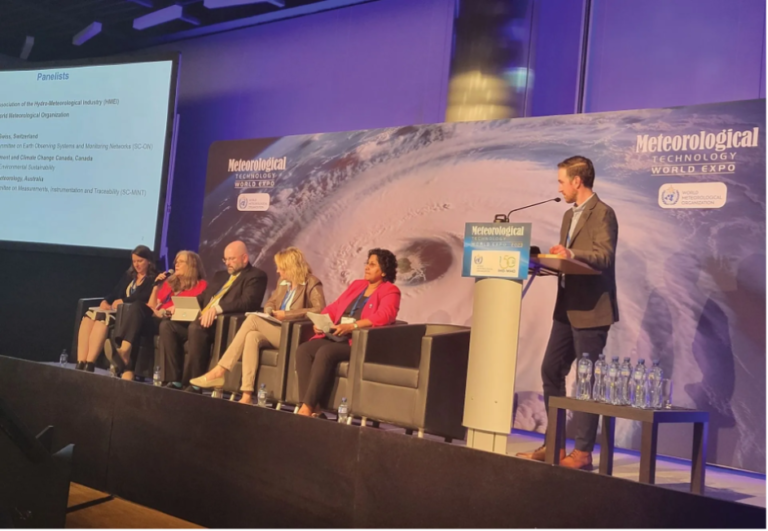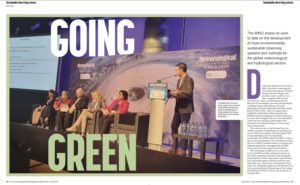The WMO shares its work to date on the development of more environmentally sustainable observing systems and methods for the global meteorological and hydrological sectors.
Despite the importance of weather data collection in assessing the environmental impacts of climate change, the technologies and practices used to collect it can have a negative effect on the environment. Issues can be found across the lifecycle of technologies, practices and standards, including energy consumption and waste generation. Concerns about this were first raised by the WMO in 2021, when the organization ratified the Global Basic Observing Network (GBON) technical regulation and representatives from the Meteorological Service of Canada (MSC) noted that the regulation didn’t address the potential environmental impacts of increased observational sites.
The outcome was a commitment from the WMO to promote the development and adoption of cost-effective strategies and technologies that are operationally and environmentally sustainable. The WMO asked if the MSC would be interested in leading this work and Shannon Kaya, director of MSC’s transformation, innovation and engineering division, was appointed as WMO focal point for environmental sustainability.
Her work began in 2022 with a survey sent out to all WMO members and a presentation at the TECO conference. Interest in advancing the sustainability of observing systems and methods has continued to gain momentum and last year Kaya held a two-day virtual workshop for which more than 400 people registered. She followed this with a presentation at Meteorological Technology World Expo (MTWE) in Geneva, Switzerland, in October 2023.

A need to do better
Kaya and her colleagues have found that met services around the world know that the environmental sustainability of their observation systems is an issue and want action, but most have yet to take significant steps.
“What came out of the survey was a lot of positivity around doing better; that the met agencies not only have a critical role in understanding our environment but are also responsible for protecting it,” Kaya says. “It’s almost ironic that we play such a critical role in understanding our changing climate but at the same time we are contributing to the problem.
“The general consensus was a need for more coordination, regulations and policies on the topic, and that the WMO should be the driver of change. Often investments ramp up when there’s a regulatory or legal requirement to achieve a specific goal – the Minamata Convention on Mercury is a perfect example of that. We’re not installing mercury thermometers anymore because we can’t, and we’re also getting rid of those we had.”
What’s holding them back?
Becoming more environmentally sustainable is no simple task for met services. One of the biggest challenges in working toward this goal is resource constraints. Many organizations are already operating under budgetary pressures and simply cannot afford to make the changes that will reduce their impact on the environment.
Furthermore, their top priority must continue to be maintaining the quality and availability of the data required for accurate forecasting and modeling. Many survey respondents noted that they can’t take steps to improve the environmental sustainability of their observing networks because the technology simply isn’t there yet. “We can’t take the risk of compromising the availability and quality of our data,” Kaya states.
Another issue raised by the survey was having the technical expertise to address environmental issues, whether that’s running training programs or simply doing things differently. Changes to how observations are collected need to be well thought out and implemented in a structured way.
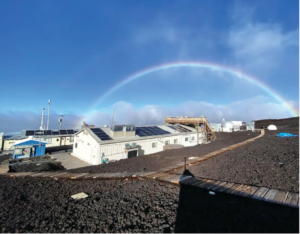
“When you switch to new technologies, there’s a learning curve. So, in addition to budgetary constraints, human resources is also a concern for many agencies, but even more so in developing countries. Some are struggling just to get a strong network up and running,” Kaya points out.
The greatest opportunities for success
The survey results highlighted where WMO members sees the greatest opportunities for success. Policy development came out as a primary opportunity for advancing environmental sustainability, but there was also a lot of positivity around the potential for technical innovation.
Respondents noted that many vendors are already moving in the right direction in anticipation of future regulations or policies, investing in R&D for new technologies and materials, developing more energy-efficient monitoring systems, using recycled materials in equipment manufacturing and embracing renewable power.
Vendors are conducting lifecycle analyses (LCA) to evaluate the environmental impact of products from raw material extraction to end-of-life disposal. They are also implementing sustainable manufacturing processes like waste and emission reductions and water conservation, and even minimizing packaging waste and using eco-friendly packaging materials.
On the flip side, some met services are analyzing where their suppliers are on their environmental, social and governance (ESG) journeys. The UK Met Office, for example, has started a ‘kickstart assessment’ initiative of its top suppliers by spend.
“The problem is, when performing a LCA on a product or service, national met services can only directly measure the environmental impacts at the ‘use’ (just after we purchase it) and ‘disposal’ stages,” says Darren Lyth, senior scientist, surface observations systems R&D at the UK Met Office.
“Anything earlier needs information and collaboration with our supply chain, and on average 80% of ESG impact comes from the supply chain,” he continues. “To reduce these impacts, we need to know what a change means to suppliers and their business, and each time we approach a change we need to think of it as a journey, and to understand where our suppliers are on their sustainability journey.”
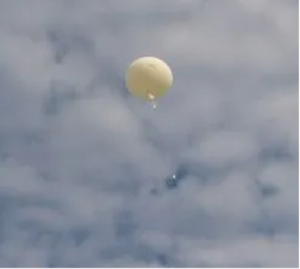
Organizations are clearly taking steps to incorporate sustainability principles. However, in terms of how the met services can do better, Kaya points to better coordination of weather station maintenance. “We need to use tools that make our routes more efficient, especially in countries like Canada that have such a large landmass,” she says.
Extending the lifetime of equipment through the implementation of proactive maintenance programs and upgrading and retrofitting existing infrastructure is also a positive step, as is transitioning to hybrid or electric vehicles. This is something the UK Met Office has begun. The organization has already met the current UK government target of 25% of civil service fleets being ultra-low electric vehicles (ULEVs), and this will rise to 100% by 2027. Electric vehicle charging infrastructure is being installed at its headquarters in Exeter as well as frontline sites.
‘’We need to use tools that make our routes more efficient, especially in countries like Canada that have such a large landmass” – Shannon Kaya, Meteorological Service of Canada
Collaboration is key
Kaya notes that increasing international collaboration will improve efficiencies, and points out that some met services are working with industry partners to “develop solutions like the compact, energy-efficient weather monitoring station that can be easily deployed in environmentally sensitive areas”.
She continues, “These ‘potential boxes’ leverage renewable energy sources and incorporate sustainable materials to minimize their environmental impact while providing reliable weather and climate data.”
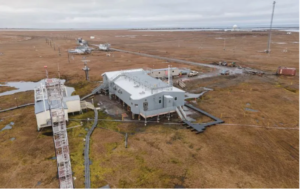
Openly sharing data can help reduce duplication and fill gaps, Kaya says. “Perhaps this will enable us to reduce how many new stations we build. This may be a controversial view, but for a long time our culture has been ‘more data is better’, but I think we should probably shift our thinking to the impact of that data.
“Will a new station or the launch of more radiosondes make a difference to the accuracy of our forecast or models? If that increase is 0.002%, let’s consider whether that makes sense from an environmental perspective.”
Incentivizing vendors
As WMO focal point for environmental sustainability, Kaya has spent the past two years starting the conversation. She believes the next step is working more closely with the vendor community, because “they’re ultimately going to provide the solutions we need”.
The challenge is that often environmental sustainability doesn’t always coincide with vendor business models, so the WMO must be innovative in creating a market for manufacturers that incentivizes them to choose this pathway. “If we introduce a regulation for biodegradable radiosondes, vendors then have a market and will respond by developing these. Policies need to be put in place to create a market for the vendor community to do the R&D that’s required to develop solutions,” Kaya comments.
“And we need to consider regulations that touch the whole lifecycle. How does it impact the ecosystem when installed? What materials is it made of? How is it packaged and delivered on-site? How will it be disposed or recycled at end-of-life?
“My focus now is working with vendors to understand what their needs are, and what we can do from a WMO perspective to put together policies and regulations that they can meet and will create a market for them.”
‘’We need to consider regulations that touch the whole lifecycle” – Shannon Kaya, Meteorological Service of Canada
Words matter
The WMO has been placing more importance on environmental sustainability in all its discussions. Outcomes so far have included a resolution adopted into the WMO Strategic Plan for 2024-2027 to ensure the environmentally sustainable design of observing programs.
“That’s a big, powerful statement for the WMO to make and a very positive step,” Kaya says. “We’ve also seen an annex added to the GBON resolution that states that members shall ‘strive to design, install, manage and operate stations within their networks in an environmentally sustainable fashion’. They may just be words but they’re important ones that are changing the direction of the WMO.”
Given the increasing global focus on sustainability, it’s possible that related discussions and initiatives within the industry will continue to evolve, and it’s expected that more met agencies will engage in this dialog.
MSC, for example, is planning its own ‘opportunity scan’ (a more positive spin on an audit) to identify areas for improving standards, practices and methods related to environmental sustainability. Kaya plans to share the output of these efforts with the WMO for consideration as a best practice.
She’s also aware of the importance of public engagement and communication to drive positive change, and the potential for innovation that exists within academia. “The academic community, students and the younger generation have a real desire to do something, rather than just talk about it. I’m energized by this and excited to be a part of ensuring the WMO facilitates dialog, shares best practice and promotes collaboration to address environmental challenges effectively,” Kaya enthuses.
Achieving net zero in Hawaii
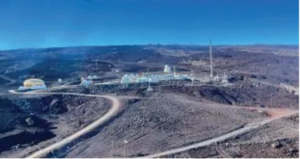
NOAA was awarded US$5m from the US Department of Energy (DoE) earlier this year to convert the Hawaii-based Mauna Loa atmospheric baseline observatory to a net zero facility. The funds will be used to purchase solar panels and battery storage systems to enable the site to run on renewable energy.
Since the Mauna Loa Observatory already uses roof collection systems to capture the water needed to run the 3.2ha campus, the observatory would be the first Department of Commerce facility in the US to be net zero for both electricity and water.
When it comes to observation networks, NOAA has considered sustainability for many years. For example, the renovations to its Barrow atmospheric baseline observatory in Utqiagvik, Alaska, were completed in 2020, and the new research station meets Leadership in Energy and Environmental Design (LEED) program standards.
Lifecycle analysis at the UK Met Office
The UK Met Office’s observations department is aware that many of its activities have environmental impacts. It is therefore looking to give more consideration to lifecycle issues during procurement, along with energy consumption and emissions during use, and disposal of observing instruments at end of life. Use of radiosondes and ocean-going hard plastic buoys and floats is also a concern.

“We’ve had an ongoing dialog with our current radiosonde supplier, who has developed a model that uses 66% less plastic in its construction and contains many bio-based parts,” says the Met Office’s Darren Lyth. “It has also developed biodegradable twine to attach the radiosonde to the balloon. We are also exploring the use of non-plastic materials for buoys.” The Met Office aims to become a net zero greenhouse gas emitter by 2030.
Biofuel to power storm-tracking weather radar
Last year a team of scientists led by the UK National Centre for Atmospheric Science (NCAS) used biofuel-powered weather radars to observe stormy conditions in a more environmentally sustainable way. These were used as part of the WOEST campaign, which focused on tracking turbulent processes in the atmosphere, with a view to improving forecasts of severe storms. The team used a range of technology, including weather radars, weather balloons, unmanned aerial systems, cloud cameras and an extensive network of ground-based sensors to monitor the onset of thunderstorms in the south of England.
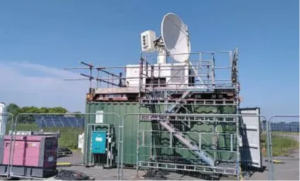
The project pioneered a novel approach using two steerable weather radar set up to specifically track and observe convective clouds while the FAAM Airborne Laboratory’s research aircraft flew overhead. Researchers combined observations from every angle to help them describe turbulence in the atmosphere. Ultimately they will use the observations to improve how weather is predicted on a day-to-day basis.
The pair of steerable weather radars were powered by GreenD+ HVO biofuel generators rather than diesel fuel sourced from crude oil, which reduced greenhouse gas emissions by up to 90%.
This article originally appeared in the April 2024 issue of Meteorological Technology International. To view the magazine in full, click here.


